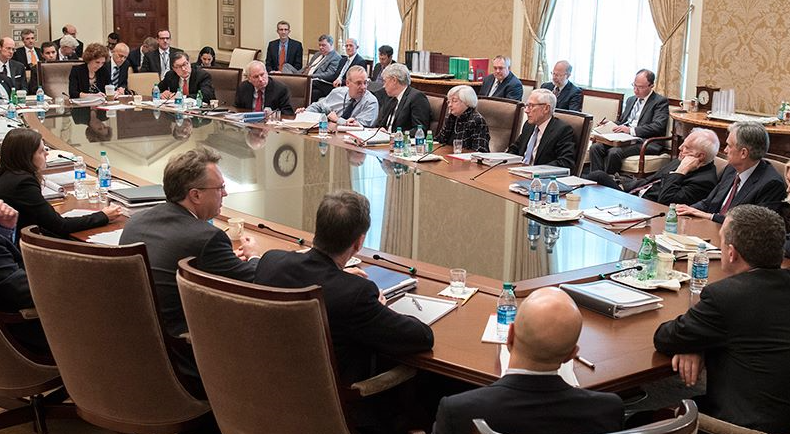The talks surrounding a tapering policy from the Federal Reserve warm up again as Individuals such as (not limited to) West Virginia’s Senator Joe Manchin, the Federal Reserve’s own Christopher Waller, and Richard Clarida have all deposited their 2 cents in regards to the Federal Reserve’s impending policy change.
It’s about the jobs!
As the press release from the most recent FOMC meeting (07/28/2021) explicitly states, “The Committee seeks to achieve maximum employment and inflation at the rate of 2 percent over the longer run. With inflation having run persistently below this longer-run goal, the Committee will aim to achieve inflation moderately above 2 percent for some time so that inflation averages 2 percent over time and longer‐term inflation expectations remain well anchored at 2 percent. The Committee expects to maintain an accommodative stance of monetary policy until these outcomes are achieved. The Committee decided to keep the target range for the federal funds rate at 0 to 1/4 percent and expects it will be appropriate to maintain this target range until labor market conditions have reached levels consistent with the Committee’s assessments of maximum employment and inflation has risen to 2 percent and is on track to moderately exceed 2 percent for some time. Last December, the Committee indicated that it would continue to increase its holdings of Treasury securities by at least $80 billion per month and of agency mortgage‐backed securities by at least $40 billion per month until substantial further progress has been made toward its maximum employment and price stability goals,” we can make the obvious assessment that the Fed has its eyes on the labor market first then inflation.
Labor dynamics
As the US July payrolls increase to 943k vs. the 870k estimate and US unemployment falling to 5.4% vs. the 5.9% estimate, it shows that the Fed’s yearn for “substantial further progress” is in reach. This report may well accentuate the tapering & tightening talk, but we cannot discount the possibility of the Fed holding until there is ample data that supports this employment. A key indicator of sustainability will be dependent on the labor force participation rate (LFPR). Even though July’s LFPR only moved up 1/10th of a percent from June’s reading, there is an interesting dynamic that underlines what the Fed may have in-front of them.
Economic shocks and LFPR
The COVID-19 economic crisis was nothing short of the quintessential economic shock as it lead to a substantially lower level of economic output, and subsequently damaging effects to the labor market cycle. At Gumbeaux Capital we stress the fact that #CyclesMatter and Tomaz Cajner, John Coglianese, and Joshua Monte provided a great deal of insight on their abstract from the Federal Reserve’s Finance and Economics Discussion Series (FEDS), as they broke down the cyclical nature of the LPFR and economic shocks. Their assessments state that, “Measuring labor market slack requires looking beyond the unemployment rate. While traditional views hold that the unemployment rate is a sufficient statistic for slack, the long-lived cyclicality of the LFPR poses problems for this view. During the period 5 to 7 years after a shock, the unemployment rate has essentially fully recovered, but the LFPR still has room to rise before it returns to its pre-shock level. Observers who focus solely on the unemployment rate during this period will incorrectly conclude that the economy has reached full employment, when in fact employment is still below potential.”
While the July jobs report, does align with the model presented by Tomaz Cajner, John Coglianese, and Joshua Monte, the key takeaway is that labor market conditions may not reach the pre-shock levels in its full magnitude until 2024-2027 in regards to LFPR in which is the derivative of the sticky employment needed to confirm a “healthy” labor market. This brings in the argument that the Fed may not be presented with the propensity to taper for the coming years, and only left with the propensity to tighten.
Note: The infrastructure bill sits as “the elephant in the room” in regards to labor, if the labor market continues to strengthen before an agreement, a taper+tighten case will appear as more likely, but if the latter comes, expect the Fed to remain relatively dovish.
Everyone’s favorite topic: Inflation
We discussed this hot topic in depth in (https://gumbeauxcapital.com/2021/05/03/uncovering-us-inflation-uncertainty/); though CPI did beat analyst consensus in July, it is still up for debate in which if inflation is transitory or not. The main point of CPI that will be under the radar for us is rent-of-shelter as the new eviction moratorium has been put in place by the Biden administration. The eviction moratorium nonetheless serves as dovish news and it will delay the full picture in the rent of shelter component in the CPI index. If CPI does consistently continue to hit above consensus, unlike employment dynamics, the Fed will be presented with the propensity to taper and tighten.
What about debt markets?
According to the Congressional Budget Office, “On August 1, 2021, the debt limit will be reset to the previous ceiling of $22.0 trillion, plus the cumulative borrowing that occurred during the period of suspension. Unless additional legislation either extends the suspension or increases the limit, existing statutes will allow the Treasury to declare a “debt issuance suspension period” and to take “extraordinary measures” to borrow additional funds for a period of time without breaching the debt ceiling. The Treasury’s cash balance and those extraordinary measures would enable it to continue financing the government’s activities for a while. However, if the debt limit remained unchanged, the ability to borrow using those measures would ultimately be exhausted, and the Treasury would probably run out of cash sometime in the first quarter of the next fiscal year (which begins on October 1, 2021), most likely in October or November, the Congressional Budget Office estimates. If that occurred, the government would be unable to pay its obligations fully, and it would delay making payments for its activities, default on its debt obligations, or both.”
(Issue)ance
The US Treasury is obligated to utilize its holdings before issuance, this indicates that the cash balance will sit at the levels seen before the suspension of the debt ceiling, so this most-likely means that US Treasuries will likely be issued at “net 0.” These dynamics will allow policymakers to buy some time to reach a deal on the debt limit. Until then, the Treasury will look to add liquidity, but with little to no effect thanks to the reverse repurchase agreements conducted by the FOMC, (which touched a record of $1.03 trillion on July 30th, 2021) in which this mechanism will act as a liquidity vacuum that will nonetheless provide a bullish case for bonds. This dynamic positions the Fed in a relatively hawkish manner and could signal a tapering scenario in the near future dependent on an agreement on the debt ceiling.
Conclusion
All in all, we all know (barring any new economic shock event) that a shift towards a more hawkish Fed is virtually inevitable. Whether it is via tapering, or rate tightening, monetary policy will be dependent on the core variables of labor, inflation, and debt. As we do expect an explicit policy shift in H1 2021, we also look to keep an eye on these variables in case of a possible hawkish surprise that may arise in Q4 2021, and or a dovish continuation through H1 2021. Setting aside the fact that Powell’s term does come to an end in February of 2022, we know that regardless of a reappointment, the Fed’s framework is exclusively derived off of data, and the upcoming economic data releases will serve as highly pivotal for the Fed and its policy stance.







